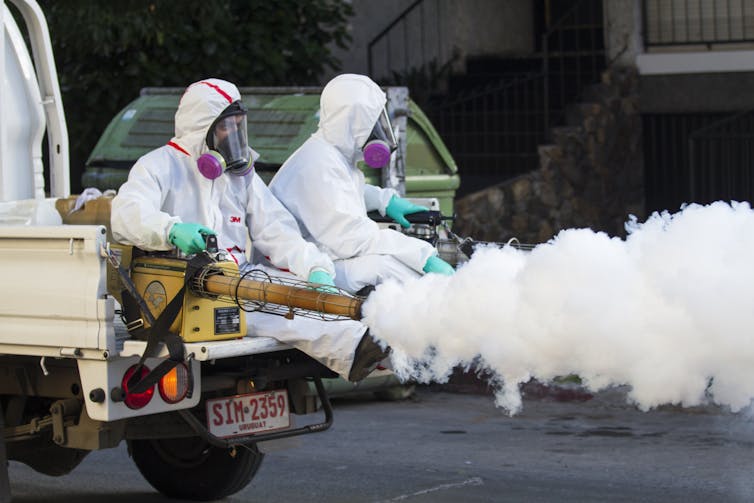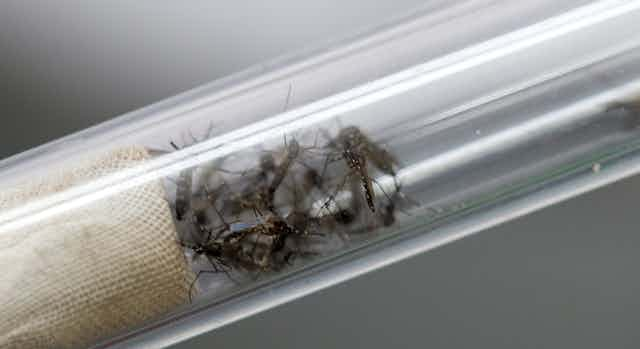Recently, two events concerning the Zika epidemic coincided: two potential vaccines against the virus were declared a success when used in mice, and Australian golfer Jason Day withdrew from the Olympic Games, purportedly because of his concern about the possibility of getting infected.
The number of media reports of these events highlight the sensationalism around Zika and the challenges faced by scientists and public health professionals in translating science to policy.
Zika captured global public attention partly through the spectacle of the birth deformities it has been linked to, particularly microcephaly and other neurological disorders, but partly also because of the Olympic Games. Without the economics of international sport, the virus may well have been ignored.
Zika was first identified in humans in Uganda some 70 years ago. By early July 2016, the current epidemic was prevalent throughout the Americas and in Asia and the Western Pacific region.
It is a comparatively benign virus: many people do not know they are infected, in contrast with other viruses in the same family (flaviviruses). Yellow fever is now largely controlled through vaccination and medical surveillance. Dengue fever and dengue haemorrhagic fever, and chikungyna are virulent, but are considered neglected diseases of poverty.
The diseases affect poor people in poor countries with limited capacity to manage the environment, control the carrier, or provide accessible and affordable health care.
Zika virus infection was declared a public health emergency of international concern in February 2016. This followed an increase in infections in Brazil and its suspected link with congenital anomalies. The number of people who have contracted the Zika virus is imprecise – in part because those who are infected may have no obvious signs, compared with the more deadly flaviviruses – dengue fever, chikungunya and yellow fever.
All are transmitted by the mosquito species Aedes aegypti and Aedes albopictus. The prevalence of these species varies with topography, precipitation, population density, the management of hard waste, and the built environment.

What do we know about the vaccine so far?
The success of two novel vaccines against Zika in mice is a remarkable achievement, especially given the lack of vaccines against dengue and chikungunya. But the roll-out of either of these vaccines is too far off to impact the Olympic Games.
We know nothing of the efficacy of the vaccines in the short or long term; their effect on people who have already been infected or are subsequently exposed to other flaviviruses; or their effect on women in pregnancy. Is the vaccine stable in varying temperatures? How resistant is the vaccine to mutation of the virus? How long before the vaccine ceases to be effective?
The next step for the vaccines is to conduct clinical trials in humans. These are usually conducted among poor populations in poor countries not only because of the greater prevalence of the targeted infection, but also because it can be easier to get past their ethics committees to conduct the studies.
Assuming the vaccine is successful, then globally and at country levels we will need to address health systems and service problems.
Who should receive the vaccine, and at what cost? If it is not free, then the vaccine will likely only protect people who are at low risk (tourists, for instance). If it is provided free to poor countries where health systems are weak, then who will cover the high cost of the vaccine roll-out, procurement, storage, local distribution, community education and monitoring across populations?
So what about Rio?
While Zika has been reported in around 60 countries, almost all of the 1,655 cases of microcephaly confirmed by WHO (as at June 22) have occurred in Brazil. The vast majority of these have been in the impoverished states of Pernambuco and Paraiba, over 1,600 kilometres northeast of Rio.
The concentration of cases in this region, predating the rise in the transmission of Zika, has yet to be explained. And only a small proportion of these cases of microcephaly have been shown to be linked to Zika.

The mosquito carrier, or “vector”, is active in Rio de Janeiro, but biting rates are low in August – the month of the Olympics. This means the risk of any disease transmitted by Aedes mosquitoes during the Games will be low. The vector is not especially efficient in transmitting Zika as it’s harder to transmit than some other viruses.
The risk of infection through sex is infinitely lower: the promotion of so-called “Zika-proof” condoms (special HIV-proof condoms have not been marketed) is an extraordinary example of capitalising on fear.
Sex and birth deformities make news, and so do medical breakthroughs. Mosquito control rarely does. Mosquito control for Zika is difficult, because Aedes aegypti prefers to graze on humans at dawn, late afternoon and early evenings; it is therefore perfectly adapted to spread any virus.
Images in the media of militarised mosquito-control programs evoke the successful campaigns against the same vectors in the Americas from the 1920s to 1950s to fight yellow fever, But fogging and spraying breeding sites is expensive and requires quick action before the vector develops insecticide resistance and so outwits the strategy.
The most effective intervention is to prevent exposure by reducing breeding sites in urban areas – getting rid of old spare tyres, removing water in the saucers of houseplants, and so on – and by humans reducing the likelihood of being bitten through wearing protective clothing and mosquito repellent. So rather than avoiding Rio, we can probably follow the logic of the epidemiology and take the risk.


